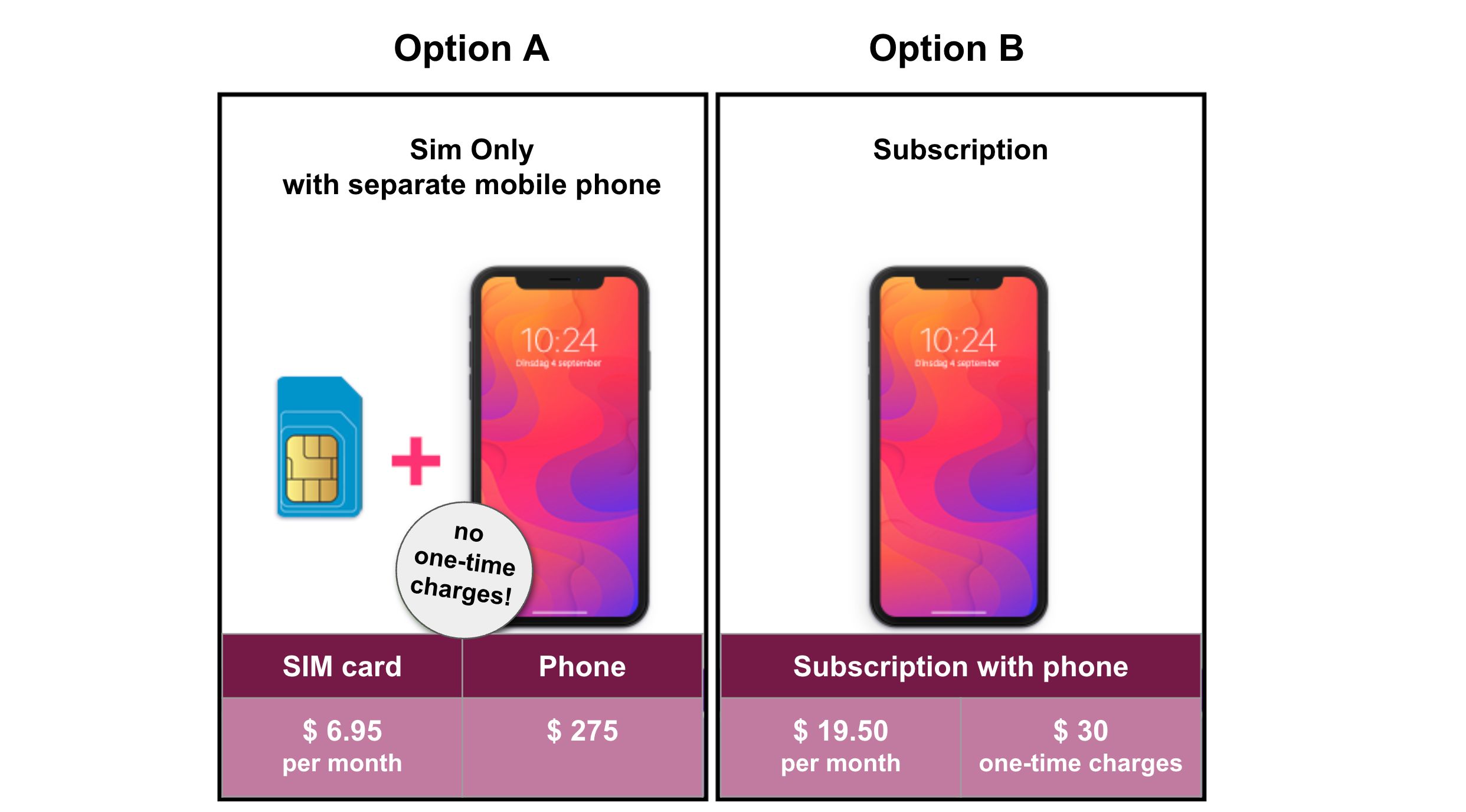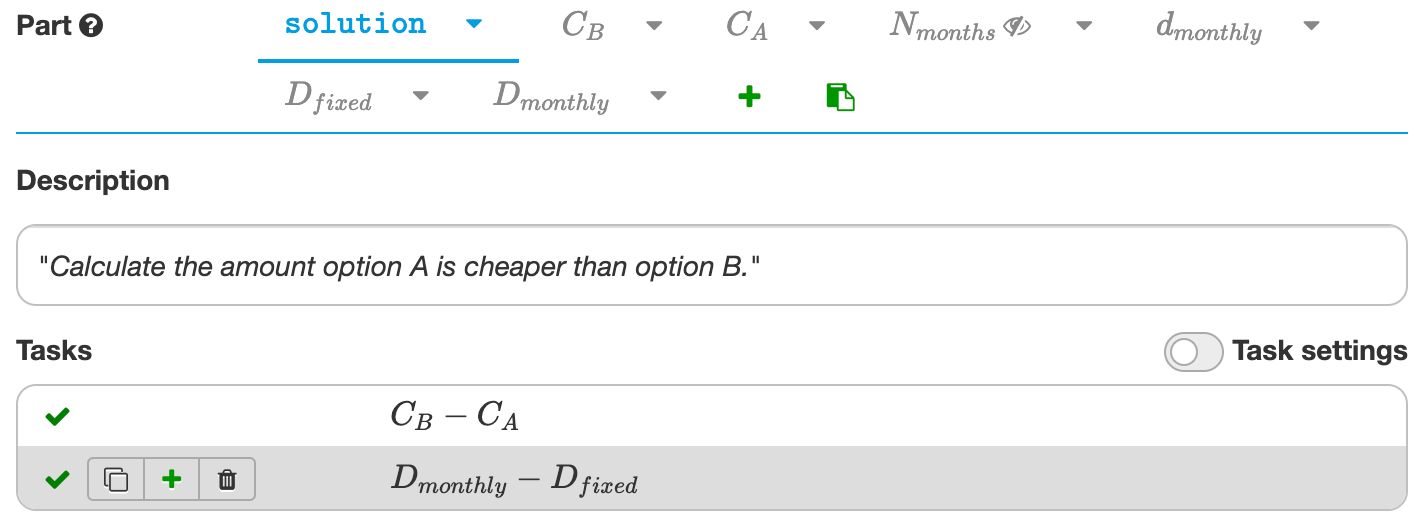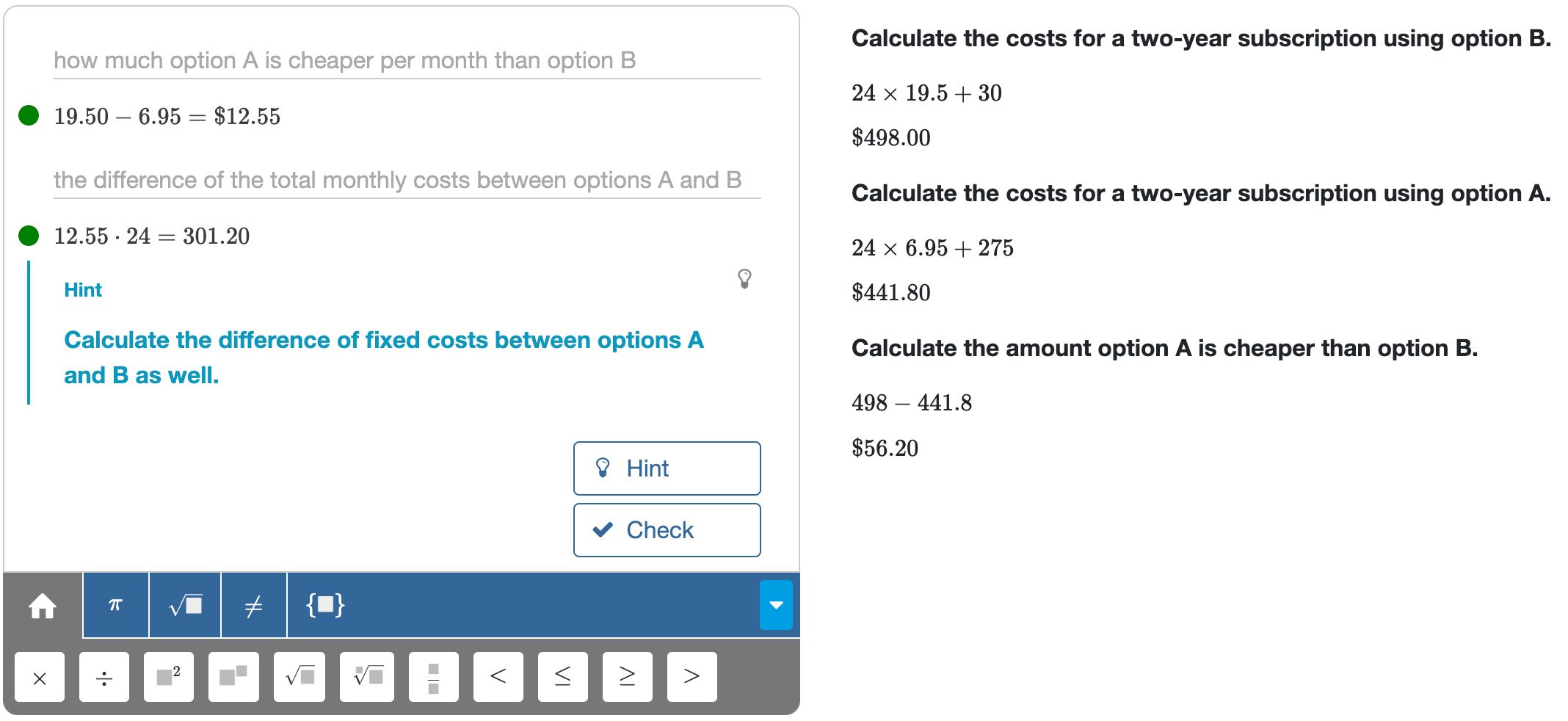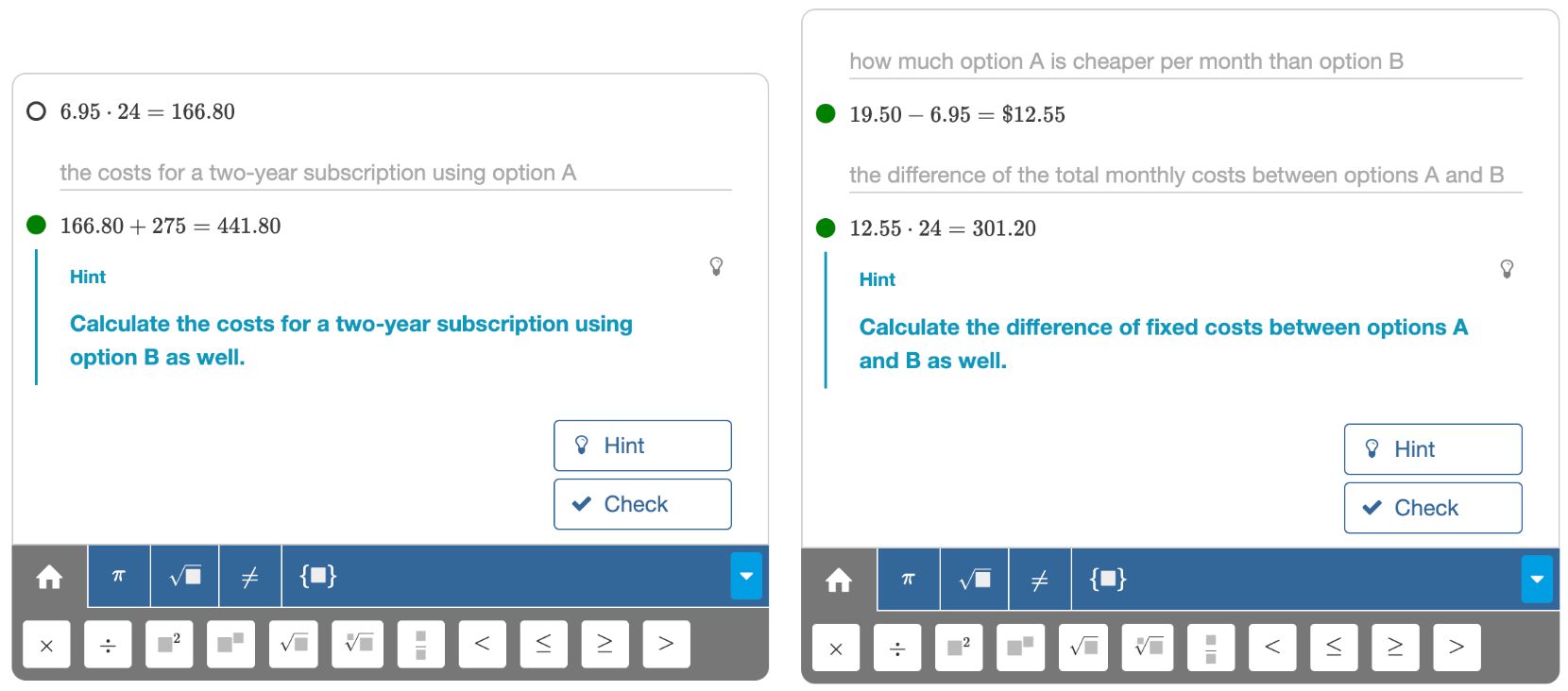Multi-part arithmetic
Multi-part questions
Multi-part questions require more than one mathematical task to solve them. Most story problems are multi-part questions. Such questions require strategic thinking to decompose the problem into subproblems and combine the partial results.
In this section, we will focus on multi-part arithmetic problems. Arithmetic problems do not require formulas or variables. We will extend to algebra and calculus in the following sections.
Example: An arithmetic multi-part question
Consider the story problem below. We will learn how to create this question using the Multistep question type.
Amy wants a subscription for two years. She is in doubt about whether she should go for option A or option B.
How much cheaper is option A than option B for a two-year subscription?

Solution models
The table below shows a solution model for our example problem.
| Part | Description | Calculation | Marks |
|---|---|---|---|
| The number of months | 0 | ||
| The total costs for option A | 1 | ||
| The total costs for option B | 1 | ||
| How much option A is cheaper than option B | 1 |
If you are a teacher or have designed assessment questions before, you probably are familiar with such solution models.
Solution models have the following properties:
- Every part represents something, such as "The total costs for option A." Algebrakit uses this to generate helpful hints and error feedback, as we will see later.
- Some parts depend on other parts. For example, to calculate , you must first calculate . Algebrakit will use these dependencies to determine in what order to solve the parts.
- You can assign marks to each part to allow for partial scoring.
- You do not have to specify how each part is solved or what its result is. Algebrakit handles this automatically.
Adding the solution model to Multistep
The image below shows how you define this solution model in Multistep:

As shown in the figure, the Multistep question allows you to add multiple parts. Each part has a name, a description, and a task.
- You add a new part by clicking the + button at the top right.
- You can change the part name through the dropdown menu next to it.
- The part description consists of a verb and a definition. In this example, the verb is 'Calculate,' and the definition is 'the costs for a two-year subscription using option B.' Algebrakit sometimes uses only the definition and sometimes the definition and verb.
The live example below shows the result after we created the Multistep question. Go ahead and solve the problem step by step. Or click the Edit button to see how we made it.
Live example: The arithmetic story problem we are creating.
Multiple strategies
What if there are multiple valid strategies to solve a problem? For example, you can find the answer to our example problem as follows:
| Part | Description | Calculation | Marks |
|---|---|---|---|
| Number of months | 0 | ||
| How much is option A cheaper per month than option B | 0.5 | ||
| The difference of the total monthly costs between options A and B | 0.5 | ||
| The difference of fixed costs between options A and B | 1 | ||
| How much option A is cheaper than option B | 1 |
You can see that this second strategy introduces new parts. The part does exist in both approaches, although the definitions differ.
You can add this second strategy to your Multistep question by adding the new parts. In the solution step, you add the second calculation by hovering over the taskbar and clicking the + button.

Partial marking
The strategy tables above have a column for the marks you award for each part. Enable the configuration of the marks from the Multistep dropdown.

The mark configuration shows all the strategies you defined. You can edit the number of marks for each part in each strategy. The total number of marks must be the same for each strategy.

How Algebrakit uses the solution model
Algebrakit uses the solution model to generate worked solutions, provide personalized support, and support partial marking.
Generate structured solutions
Algebrakit uses the solution model to generate a worked solution with a clear structure. Algebrakit also adds structure to the input area when students press the hint button. It decomposes the input into sections and adds the part descriptions. This helps students connect their mathematical work to the concepts they are calculating.

Personalized support following the student's strategy
If a solution model has multiple solution strategies, as in our example problem, Algebrakit will track the student's strategy. In the example below, the hint depends on what parts the student was working on.

Skipped parts
What if a student finds the correct answer to the problem without calculating every part of the solution model? For instance, in our example problem, a student might calculate directly without first calculating . Algebrakit will detect that the student skipped the step and award the marks. In an extreme case, a student could enter just the final answer and receive full marks.
You can specify that an intermediate part is required. This means that a student must enter that intermediate part to receive the marks. You can read more about this here.
What if the student uses an unknown strategy?
Most math problems have just one or a few strategies to find the solution. What happens if a student applies a creative approach you didn't anticipate? Algebrakit will not be able to award marks for unknown steps. However, if the student's approach is correct, he will calculate the result of a known part sooner or later and receive the marks.
